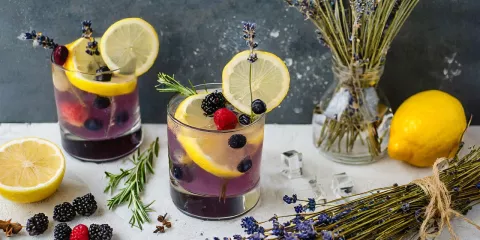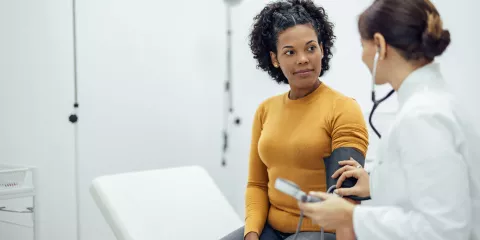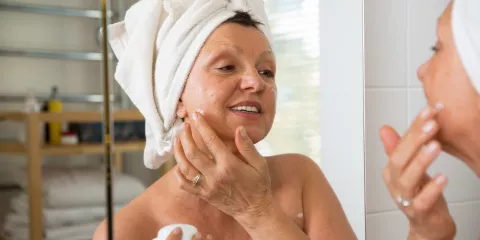
You don’t need a large yard or even a green thumb to grow your own food. All you need is a little time, effort, and room to start growing your own herbs. Not only do herbs provide plenty of flavor, but they also provide various health benefits [1].
We’ve compiled a guide on everything you need to know about growing your own herbs.
What Herbs Need to Thrive
Different varieties of herbs will require different amounts to thrive, but in general, all herbs need a combination of:
- Sunlight or light
- Water
- Room to grow
- Nutrients
- Soil or other potting medium
- Drainage
And the amount of light, water, and nutrients your plants will need will vary according to the season, environmental factors like humidity levels, and where you actually plant them.
What Herbs Want to Avoid
On the other hand, herbs do not like it when:
- The soil is too wet or too dry
- Too much time passes between waterings
- The air is too dry (like when your heater is on during the winter)
- Growing too closely together
- Being too hot or too cold
- And some don’t even like drafts
This is why you need to consider an herb’s natural growing environment, the climate they’re typically found in, when deciding where to plant your herb garden.
Where to Plant Your Herb Garden
The great thing about an herb garden — besides providing a steady supply of nutritious, delicious herbs — is that it can live just about anywhere. From kitchen windowsills to vertical wall planters, a small apartment porch to a lush garden, herb gardens come in all shapes and sizes.
You should consider your herbs’ needs (mentioned above), as well as your gardening goals, when deciding where you’ll plant your herb garden. If you want to have access to your herbs year-round, then your kitchen may be the best place for your herb garden. If you don’t have good light in your apartment, then a balcony or porch could work. And if you’re looking to produce more flavorful herbs, then growing them outdoors in natural sunlight may work best.
If you’re unsure what your plants will need or where you should plant them, take pictures of your space and bring them to your local garden center to get help.
How to Choose Which Herbs to Grow
Once you know where you’ll plant your herb garden, you can choose which herbs to grow. You should plant herbs that you’ll want to use and herbs whose needs you can meet. Different herbs have different needs when it comes to sunlight, drainage, temperature, fertilization, and space. For example, mint is a sprawling herb, and will take over planters or garden boxes where it’s close to other herbs.
On the other hand, some kinds of herbs actually grow best together. For example, Mediterranean herbs like rosemary, oregano, thyme, and sage prefer full sun and dry, sandy soil. You wouldn’t want to plant them with moisture-loving herbs like cilantro, basil, or tarragon [2]. With a little research and help from the staff at the garden center, you can figure out which herbs will thrive in your space and grow together happily.
What to Buy to Get Started
With the right gardening tools and supplies, growing herbs is easy. Head to your local garden center to pick up the supplies (and advice!) you need to start your herb garden. We recommend you buy:
- Fertilizer (specific for herbs)
- Soil (the exact type of soil will depend on which herbs you’re planting)
- Gloves, a watering can, and a trowel
- A knee pad to protect your knees while gardening
- Seeds, cuttings, or plants to grow
- Pots
How to Pick the Right Pots for Your Herbs
It’s important you plant your herbs in pots that are the right size and material. You wouldn’t want to plant a moisture-loving plant like basil in a terracotta pot, as these tend to dry out faster than plastic or ceramic pots. And you wouldn’t want to plant a sprawling herb like mint in a small planter, but maybe a window box or a large box on your window sill.
When it comes to potting plants, the pot must fit the plants and their growing habits. If the pot is too small, your herbs can quickly become root-bound. And if it’s too large, they might spend all of their energy on root production and not grow like they should.
Growing and tending your own herbs is a great way to bring their flavor and health benefits into your home, and integrate a heart-healthy activity into your routine.
References
[1] https://www.healthline.com/nutrition/10-healthy-herbs-and-spices
[2] https://www.motherearthnews.com/real-food/which-herbs-grow-best-together-zbcz1506/












